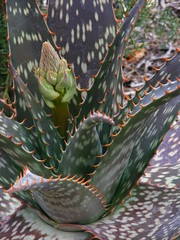 So, it turns out I actually like fava beans, when they're prepared properly. It seems I somehow missed the fact that the beans have a tough, leathery skin that needs to be removed before eating. No wonder I didn't like them before. I'm amazed that more recipes for fava beans don't mention this rather crucial fact and I feel a bit of an idiot for not figuring it out for myself sooner. I only cottoned on after I read a thread on Chowhound regarding favas. By the way, Chowhound is an excellent resource for anyone with cooking and/or food questions. Now that they've fixed the thread search function you can get all sorts of useful information.
So, it turns out I actually like fava beans, when they're prepared properly. It seems I somehow missed the fact that the beans have a tough, leathery skin that needs to be removed before eating. No wonder I didn't like them before. I'm amazed that more recipes for fava beans don't mention this rather crucial fact and I feel a bit of an idiot for not figuring it out for myself sooner. I only cottoned on after I read a thread on Chowhound regarding favas. By the way, Chowhound is an excellent resource for anyone with cooking and/or food questions. Now that they've fixed the thread search function you can get all sorts of useful information.I soaked the beans overnight in plenty of water, then removed the skins. They came off quite easily after soaking. After that I followed this recipe for ful medames and the result was quite delicious, in my humble opinion.
Fava beans are Europe's only indigenous bean and have been cultivated since the Iron Age. In ancient Greece and Rome, fava beans were used in voting; a black bean represented a 'no' vote, with a white bean indicating a 'yes' vote. The 6th century B.C. Greek philosopher Pythagoras (he of the Pythagorean theorem) reviled the fava bean and forbade his followers from eating them. He thought that the beans contained the souls of the dead. His superstitious dread may have resulted from witnessing favism, which is a hereditary disease. Individuals who lack the gene for producing the enzyme G6PD (which assists in oxygenating red blood cells) risk severe illness and even death by kidney failure and hemolytic anemia after eating fava beans. The genetic susceptibility to death by fava bean is most concentrated in Mediterranean populations; the vast majority of people have nothing to worry about when eating fava beans. Which is fortunate, as they are quite tasty when handled correctly.
Photo from benketaro on Flickr












No comments:
Post a Comment